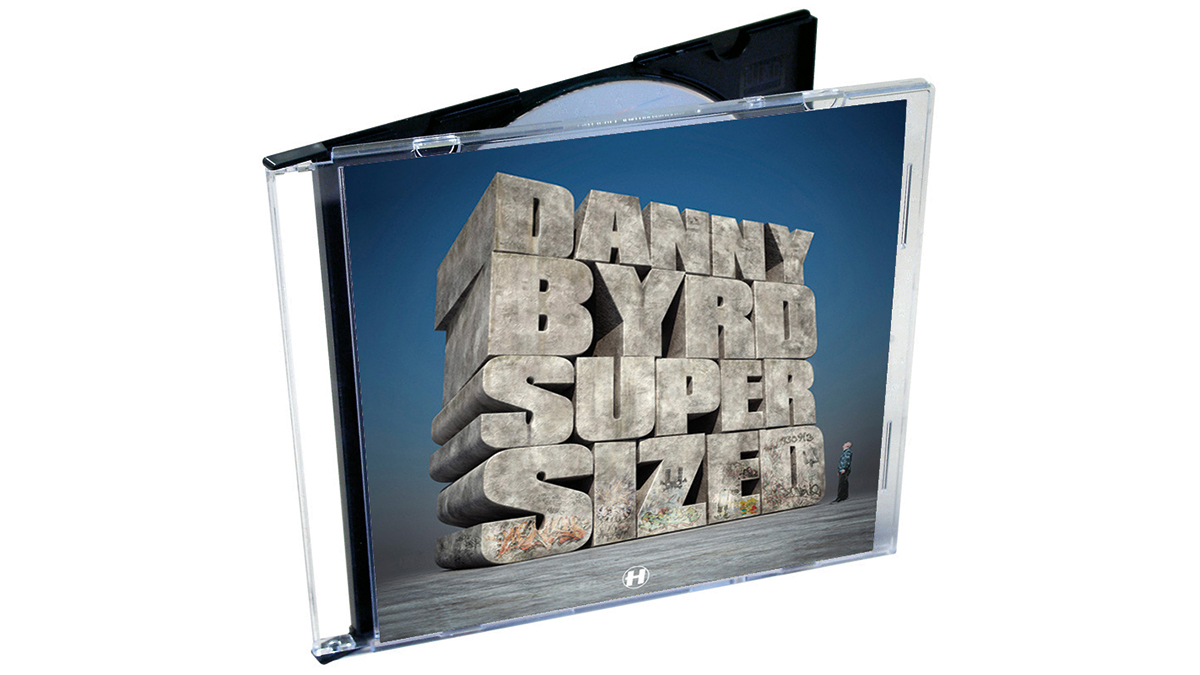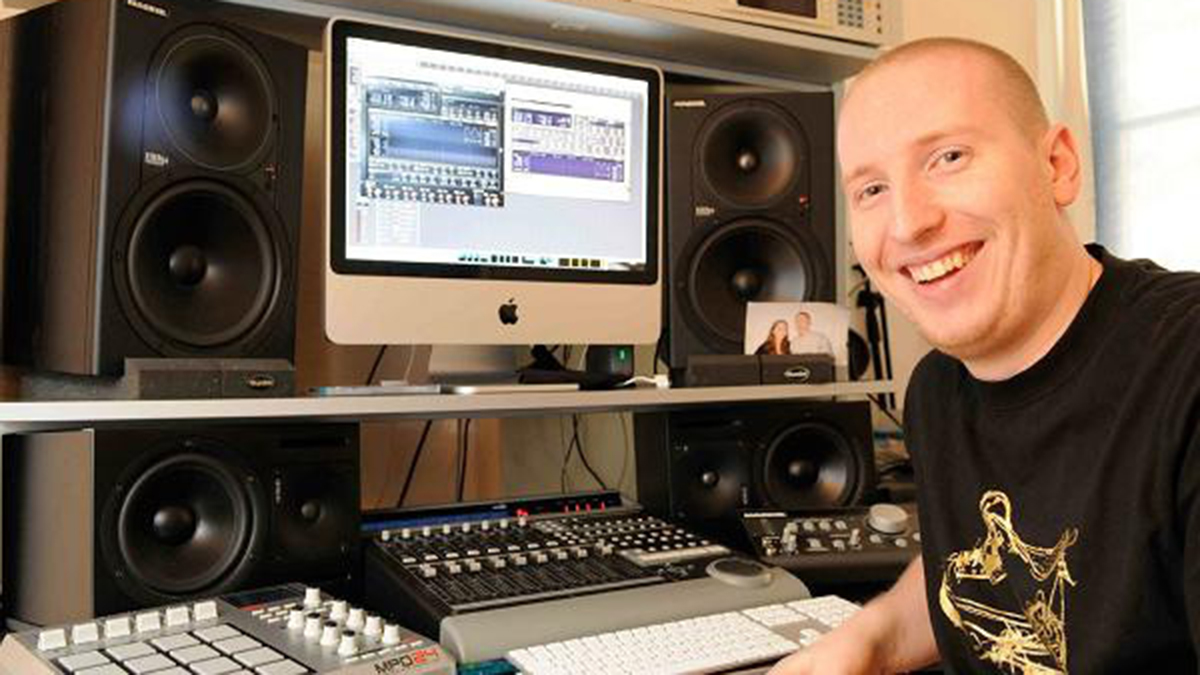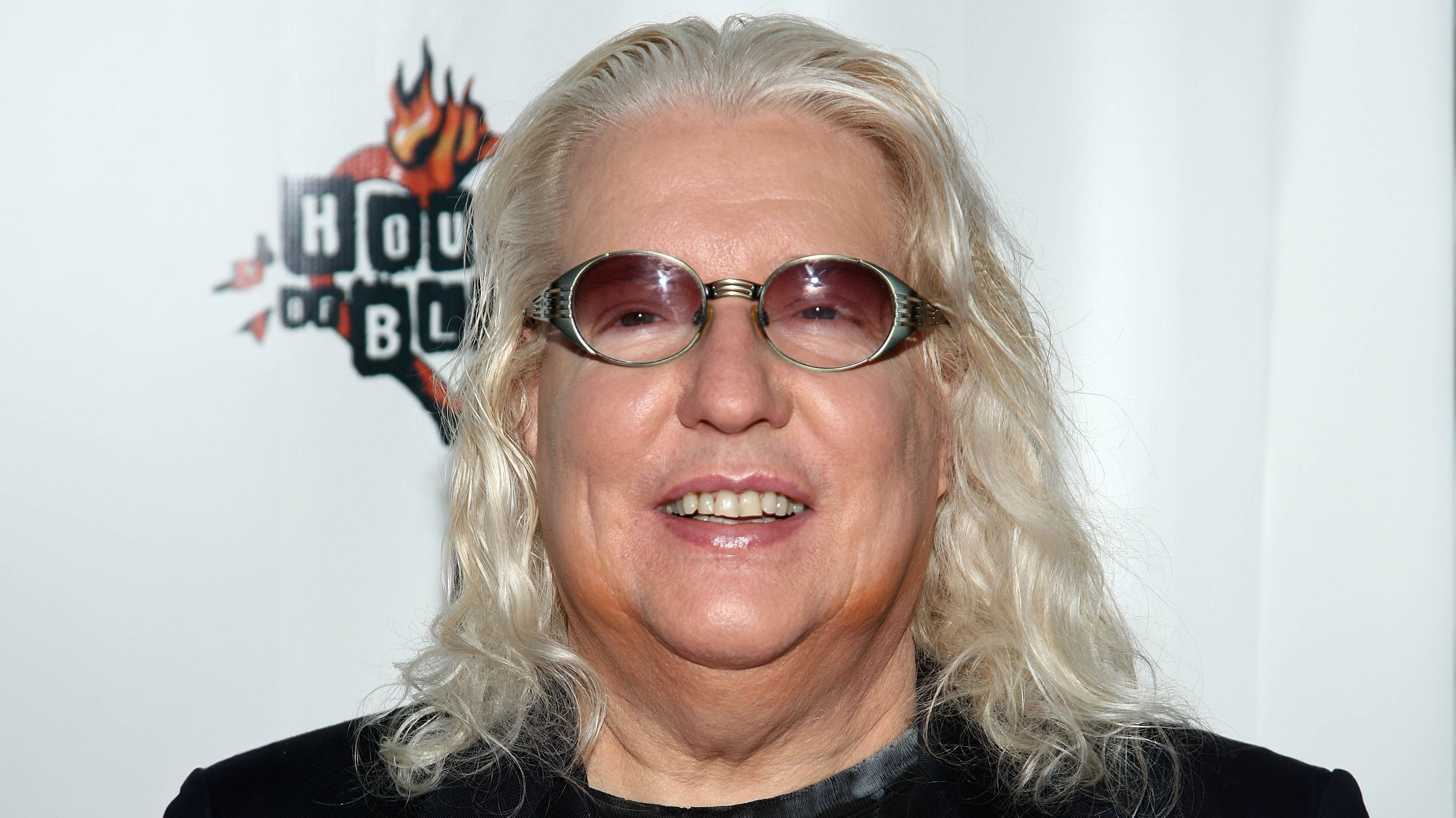Classic album: Danny Byrd on Supersized
“I was in a state of sheer fear making this album – that was my main memory."

Danny Byrd’s uplifting DnB was a breath of fresh air when he joined Hospital Records as one of their first new signings of the Millennium. His vocal R&B and hip-hop- infused style was an antidote to a scene which at the time was moody as hell, with a slew of Ed Rush & Optical and Bad Company clones invading the genre with their techstep and darkcore assaults. “All the copycats had taken it really fucking dark,” says Danny. “The emotion had gone, and it was a dark period.”
Disillusioned, he’d pushed his energies into making “feel-good” drum & bass – a style that his new label was all about, promptly asking him for an album’s worth. And just like that [snaps fingers], eight years later he turned in his debut, Supersized. “It took me a fucking long time,” chuckles Danny. “Everyone was crossing over from hardware to digital. Within six months the whole scene had converted to Logic. I’d had an Atari ST, an Akai S5000, and a Yamaha 01V mixer – I fucking loved that setup. I used to use 100 tracks on a hardware setup. It was very intricate, with a lot of layering – you just couldn’t do that with a G4 Mac, and so I just couldn’t make Danny Byrd music on the technology at the time. That held me back for a few years.”
For nearly a decade he wandered through his “wilderness”, confidence-draining, as he struggled to learn the new digital ropes. The bosses at Hospital sat him down, show them an album, or they’d have to let him go. An ultimatum that would ultimately fuel a much-needed burst of productivity.
“That put a rocket up my arse to get working for sure,” says Danny. “This gap of time that passed of me not doing stuff was too much for Hospital. As much as they wanted to put out my music, they can’t move on if there’s no music to put out.
“I was in a state of sheer fear making this album, that was my main memory. And, fuck me, what you can achieve in a short period of time if you really put your mind to it.”

Shock Out
“This was the first single. I had no idea what the label wanted, but I had an idea to make an updated jungle track, which wasn’t popular at the time – people just weren’t using breaks like that.
“I put together an Amen break and 808 sketch really quickly and sent it off to Hospital and they went mad for it. I didn’t understand. Some of the other sketches were really intricate, and this was just rolled out – it was almost like a piss-take! But they wanted me to send them my hard drive so I didn’t delete it!
Get the MusicRadar Newsletter
Want all the hottest music and gear news, reviews, deals, features and more, direct to your inbox? Sign up here.
“When they said it was gonna be the first single I was like, ‘Really?’. Looking back of course they were right. The artist doesn’t always know what they’re doing, let’s be honest.”
Gold Rush
“This was co-produced with the Brookes Brothers. I met Dan on a Thursday and by Sunday I was in the studio with him and Phil. They played me some of their new music and it was like, ‘Fuck me! This is blowing my mind’. We were on exactly the same page. We had one central computer running Cubase, and I had Logic on my laptop. We started the track on our headphones and bounced out parts on USBs. We were trying to outdo each other with the craziest arpeggios or vocal chops.
“I did the vocal chops on this one. Dan did beats and arrangement and Phil did sound design and samples. It was the best collaboration I’ve ever done. We had the basis of the track done by the end of the day. It proved to Hospital that I could do it.”
Weird Science
“I remember telling Tom Kelsey, who was an A&R at Hospital, that I’d gone and seen Justice play on the weekend and he said, ‘Why don’t you make a drum & bass track like that?’. I was like, ‘Yeah. Why don’t I do something like that?’
“Although it doesn’t sound exactly like Justice, it was still an electro-influenced drum & bass track, which again wasn’t the norm in 2007/2008.
“I did my own vocals on this, using the vocoder in Logic to mess them up – it did a ridiculous speed up that goes about a thousand bpm. All those cool little tricks, you know?
“I don’t know how well that track stands up today, but it was really fun writing it at the time.”
I don’t know how well that track stands up today, but it was really fun writing it at the time.
From Bath With Love
“This track came from some orchestral samples I had. It just started with the string intro and a lot of Apple Loops, which not a lot of people were using back then.
“I was really feeling good about the jungle influence of Shock Out so I decided to do a lot more stuff with breaks, too. I used a lot of different jungle breaks. That was the other thing that I noticed when making this album – you can’t use the same drums. With DnB it’s hard enough to get that variety on an album, so having extremely different drums sounds made a really big difference.
“Martin Fillery is credited with some whistling [laughs]. He was a mate and we recorded it in his bathroom, adding in splashes and those types of sounds as well.”
Supersized
“I wanted to do a double bass-type of track like Brown Paper Bag. Again, I was just looking for variety. It’s not one of my favourites from the album, even though it’s the title track.
“Again, it was a lot of Apple Loops. It was about finding a lot of those samples that people weren’t using at the time. As for the arrangement, there was always a template. Sometimes it’ll be a 32-bar intro then a breakdown, then 64 bars of the main section. That can help you when you’re procrastinating. You think, ‘Let me just copy that section’. If you’re stuck on something, copy it, and change a few bits. Although it does sound generic, it does help you get creative.”
Joy And Pain
“I was adamant about recording a lot of vocals for this album. This is a girl called ReDD. She was a friend with another vocalist I worked with called Kevin Mark Trail – he was a big soul and R&B singer back in the noughties. If you’re looking for a vocalist, just ask a vocalist [laughs]. She was excellent. I could definitely do with her contact details again now!
“The bassline started a certain way and had a certain melody to it, but I re-wrote it underneath her vocals. It’s much easier to write things when you have the vocals there and rejig it. That was something I learned making this album, the instrumental is never just the instrumental. Once you get the vocals it’s worth playing around and coming up with something else as you get something that gels better.”
Red Mist
“I had a load of samples off Random Movement, the drum & bass producer. There was a horn sample from one record, and I took another from another place and somehow managed to join them together. I’m a big hip-hop fan, so wanted to make something like a Just Blaze production. Then I took an acapella I had already recorded with I-Kay, who was one of my vocalists. He’d recorded the whole Red Mist vocal to another track that Hospital didn’t like. I knew I could use that again and it just worked perfectly, never throw anything away.
“The hard part of this was coming up with the DnB drop for it. It took me a good few tries to get that right.
“In 2009 we did a VIP mix that got playlisted on Radio 1, that was the first major radio success I’d ever had.”
In 2009 we did a VIP mix that got playlisted on Radio 1, that was the first major radio success I’d ever had.
Feet Won’t Touch The Ground
“I-Kay again. He’s a vocalist I met in 2003 in my wilderness years when I was struggling to make drum & bass. There was a part of me that thought, ‘Fuck this! I’m gonna make R&B,’ because I loved what was around at the time.
“It was very hard to find vocalists in the Bristol/Bath area that were any good. Then I stumbled across I-Kay and he was easily the best one that I’d ever heard, and still is. I’d never worked with a vocalist of that calibre before. He’s an integral part of my career and a great guy.
“I wanted to give him a really uplifting track, but one that didn’t break down too much, and just kept on building and ascending. It’s just one massive euphoric track, basically.”
Planet Music VIP
“This was a track I wrote back in 2003 with a guy called Adrok, who is now one half of GotSome. It seemed like a really good one to update.
“I remember we had MC Foxy doing vocals, but I lost the originals from the first version, so I had to record him again. He was hard to track down.
“He got in touch when he was in Bristol saying, ‘Look. I’m by this newsagents. Can we do it in there?’ I had my laptop and audio interface and mic and went down and we recorded it in the back of a newsagents with a load of porn mags around us [laughs]. That was a first.
“This is the ‘VIP’ mix. It’s like a ‘special’, with a slight twist to make it stand out in your sets. I could make you a ‘Future Music VIP’ mix and it would be a totally different version to anyone else’s. It’s another way of saying it’s a remix, but it’s not quite as involved.”
Labyrinth
“This was probably the first one I made for the album. I started it at one of the Sun & Bass festivals, on my laptop. I used AppleTalk for the vocals, and typed up some random stuff and just sampled it in.
“I remember struggling to get the mixdown right. I would play out early versions in my DJ sets, and it wouldn’t quite work, I was always a bit depressed about that. I spent endless hours trying to get it right. Finally, when the album was almost done I realised, you know what? Not everything has to work on the dancefloor. This was a track for the headphones. Not everything has to smash the club. It took me a while to learn that.”
Soul Function
“I never really wanted this track on the album. It was something from 2005, but Tony [Coleman] at the label loved it so much and said it always went down in his sets, so it’s gotta be on there.
“And, back then, ten tracks might have felt like you were short-changing people, so we stuck it on.
“It was three years old, so I gave it an updated mixdown. On reflection, it was cool to have it on there as it fits in with the whole album vibe.
“The whole album was fucking hard work. After that point, I always had respect for anyone that managed to finish one, even if I don’t like their music. You realise that it’s not a sprint, it’s a marathon.”


"At first the tension was unbelievable. Johnny was really cold, Dee Dee was OK but Joey was a sweetheart": The story of the Ramones' recording of Baby I Love You
"Reggae is more freeform than the blues. But more important, reggae is for everyone": Bob Marley and the Wailers' Catch a Fire, track-by-track









